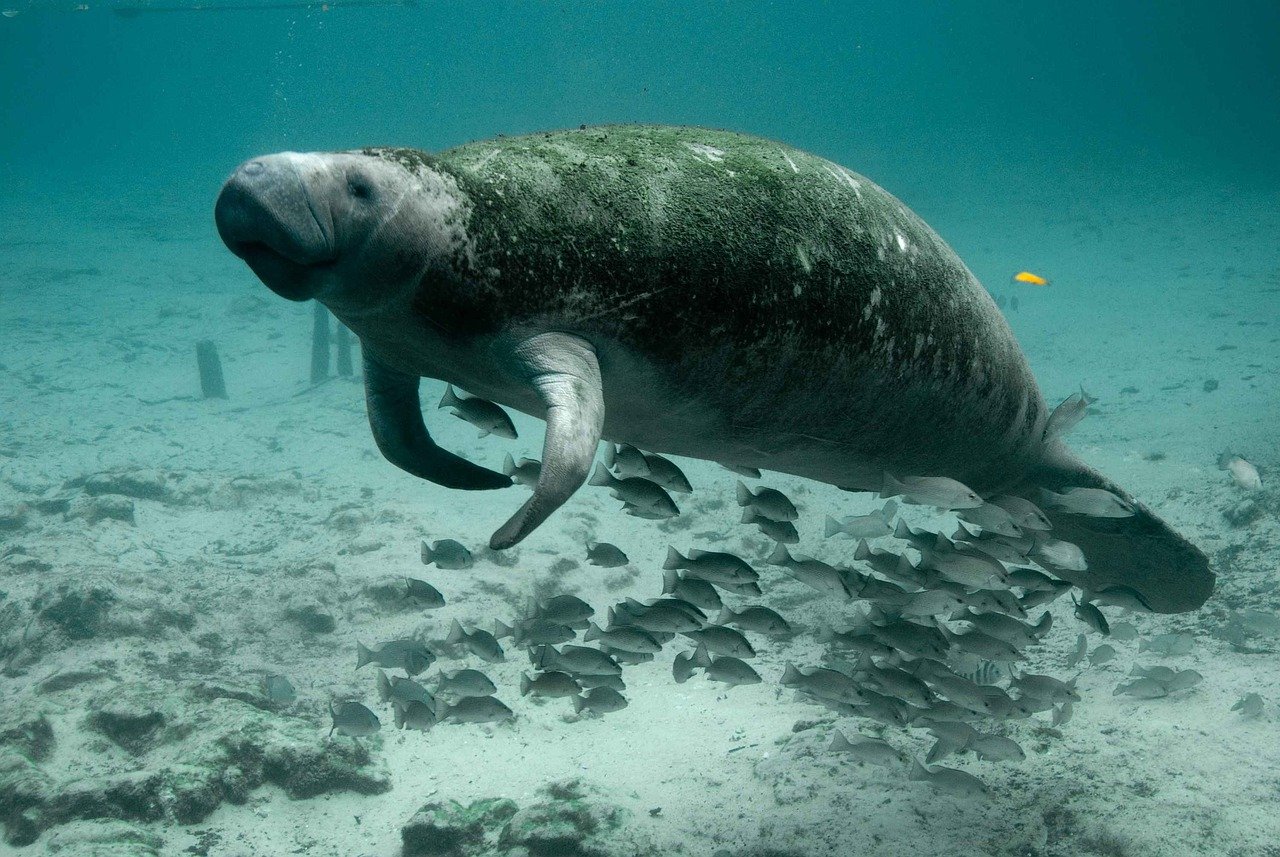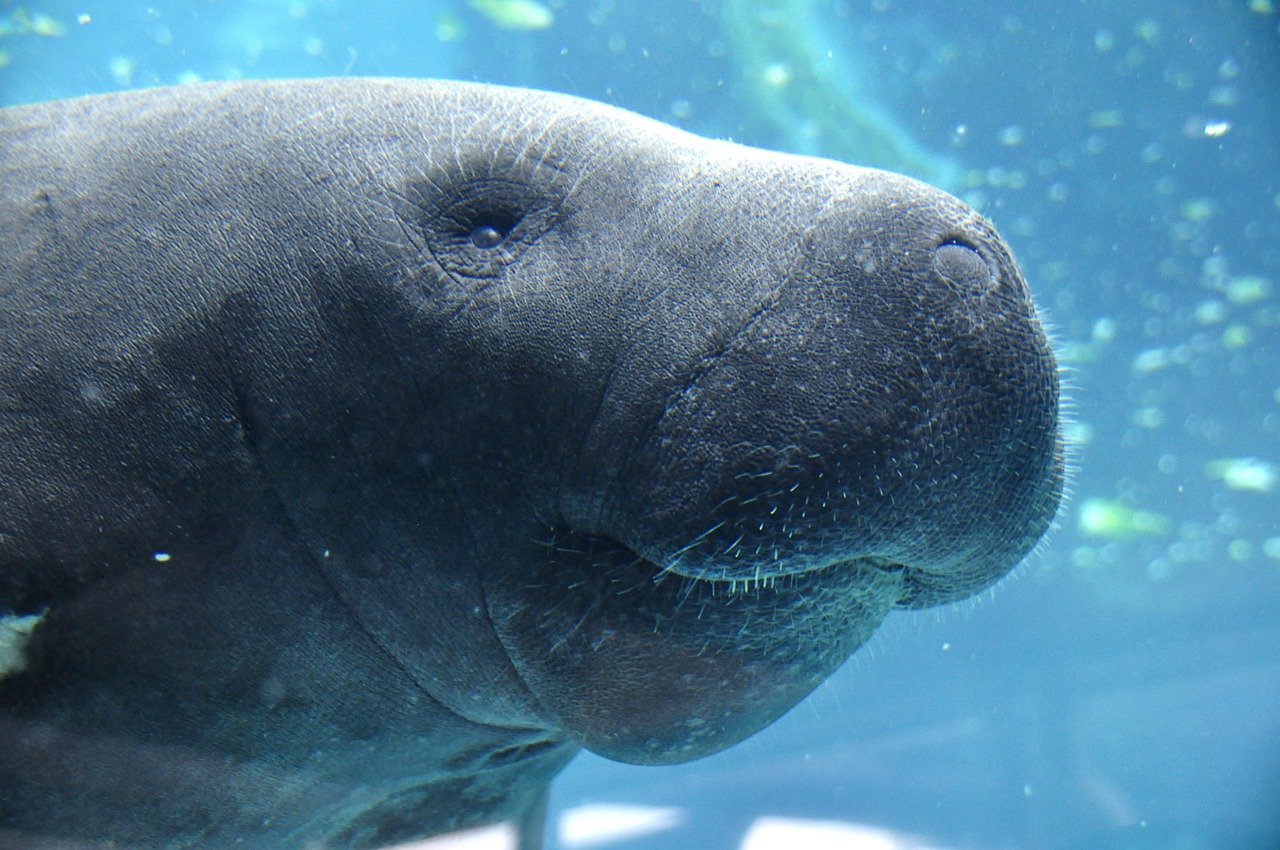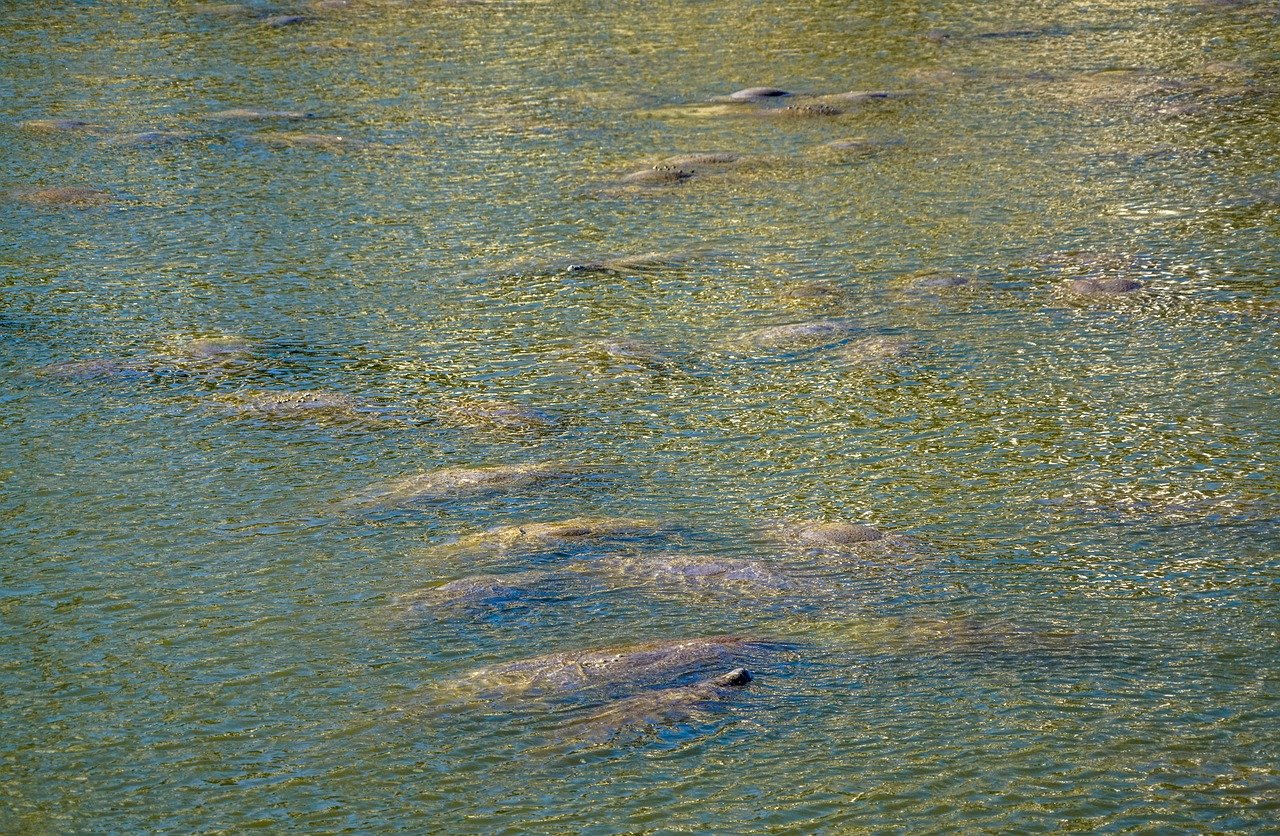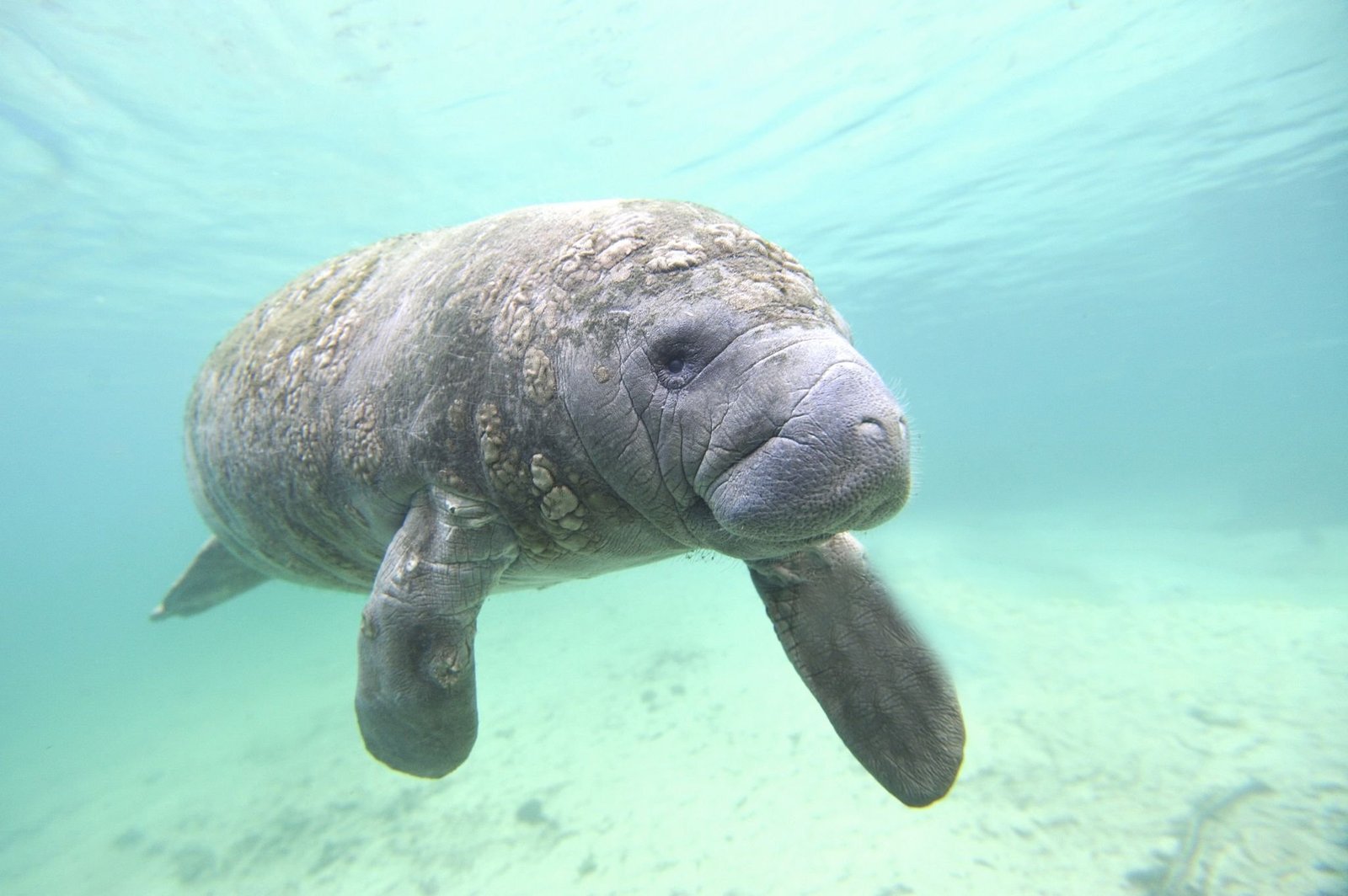Manatees Facts Diet Habitat and Information
Manatees, often referred to as sea cows, are large, gentle marine mammals known for their slow moving and peaceful nature. They are part of the order Sirenia, which also includes three species of manatees (West Indian, African, and Amazonian) and their Pacific cousin, the Dugong. Here’s an overview of some fascinating aspects of manatees:
Habitat and Distribution
West Indian Manatees: They are found in the south-eastern United States, primarily in Florida during the winter months, and in the coastal areas and rivers of the Gulf of Mexico and the Caribbean Sea.
Amazonian Manatees: These are found in the freshwater environments of the Amazon Basin.
African Manatees: They inhabit the west coast and rivers of Africa, stretching from Senegal to Angola.
Physical Characteristics
Size and Weight: Manatees are quite large, typically reaching up to 10 to 12 feet in length and weighing between 800 and 1,200 pounds, though some can be much larger.
Appearance: They have a streamlined, rounded body with a flat, paddleshaped tail for propulsion and two flippers for steering and manipulation of objects.
Skin: Their skin is thick and wrinkled, which helps in minimizing the growth of algae and barnacles.
Color: They are generally gray or brown, with a sparse scattering of short hairs on their body.
Behavior and Diet
Diet: Manatees are herbivores, feeding on a variety of aquatic plants. Their diet can include over 60 different freshwater and saltwater plants.
Breathing: Although they are aquatic, manatees are mammals and need to surface approximately every 5 minutes to breathe, though they can hold their breath for up to 20 minutes when resting.
Social Behavior: They are mostly solitary animals but can be found in small groups. Manatees communicate with each other using a range of sounds, especially between mothers and their calves.
Reproduction and Lifespan
Manatees have a slow reproduction rate, with females giving birth to one calf every two to five years after a gestation period of about 12 months. Calves stay with their mothers for up to 2 years.
In the wild, manatees can live up to 40 years or more, though their life expectancy is often less due to human related threats.
Conservation Status
Manatees are considered vulnerable and are threatened by a variety of human activities. Threats include boat strikes, entanglement in fishing gear, loss of habitat, and pollution. Conservation efforts are ongoing and include laws to protect manatee habitats, boat speed restrictions in manatee zones, and rehabilitation programs for injured individuals.
Their gentle nature and unique appearance make manatees beloved by many, and they play a key role in the ecosystem by helping to maintain healthy aquatic environments.

The record breaking roughly 1000 manatees gathered in a Florida park
The event referring to highlights a significant aspect of manatee behavior, especially in relation to their search for warm water during colder months. Manatees are sensitive to cold temperatures and seek out warmer waters to survive the winter. Florida’s natural springs and the warm water effluents from power plants are crucial habitats for them during this time. These areas provide refuge from the colder water temperatures found in the Gulf of Mexico and Atlantic Ocean.
The gathering of roughly 1,000 manatees in a Florida park likely took place in a location such as Blue Spring State Park or a similar environment known for its warm, spring fed waters. Blue Spring State Park, for instance, is a designated manatee refuge that provides the consistently warm temperatures manatees need to survive the winter. During cold spells, manatees congregate in these warmer waters in large numbers, which can indeed reach around 1,000 individuals. Such gatherings offer a unique opportunity for research and public education about these gentle giants.
These large gatherings underscore the importance of protecting critical manatee habitats. Conservation efforts and public awareness campaigns focus on ensuring these areas remain safe and accessible for manatees, especially as they face ongoing threats from habitat loss, pollution, and boat strikes. The protection of warm water refuges is crucial for the survival of the manatee population, particularly as they cope with fluctuating winter temperatures and the increasing frequency of extreme cold events related to climate change.

Facts about Manatees
Certainly! Manatees are fascinating creatures with a number of unique characteristics and behaviors that make them stand out in the animal kingdom. Here are some interesting facts about manatees:
- Ancient Relatives: Manatees are believed to have evolved from a wading, plant eating animal called the Tethytheria more than 50 million years ago. Their closest living relatives are elephants and hyraxes.
- Gentle Giants: Known for their peaceful and gentle nature, manatees have no natural predators in the wild. Their biggest threats come from human activities.
- Communication: Manatees are not silent creatures; they communicate with each other using a range of sounds, especially between mothers and calves. These sounds include squeaks, chirps, and whistles, which can be used to express emotions or coordinate movements.
- Breath Holding: While they need to surface for air, manatees can hold their breath for up to 20 minutes when resting. However, they typically surface every 35 minutes to breathe.
- Slow Metabolism: Part of the reason manatees are so sensitive to cold is their slow metabolism. This physiological trait means they require warm water environments to survive, as their bodies do not generate enough heat to withstand cold temperatures for extended periods.
- Feeding Habits: Manatees spend a significant portion of their day feeding, consuming about 49% of their body weight in vegetation daily. Their diet consists mostly of sea grasses and freshwater vegetation.
- Molars: Unlike most animals, manatees continuously replace their teeth. New molars grow at the back of their mouth and move forward to replace old, worn teeth that fall out.
- Nursing Calves: Manatee calves are born underwater, and mothers must help them to the surface to take their first breath. Calves nurse from teats located behind the mother’s flippers and can do so while both are swimming.
- Dexterity: Despite their bulky appearance, manatees are quite dexterous. They use their flippers to manipulate objects, steer through the water, and even “walk” along the bottom of their aquatic habitats.
- Conservation Status: The West Indian manatee (which includes the Florida manatee subspecies) is classified as “Threatened” under the U.S. Endangered Species Act. Conservation efforts have helped their populations recover in some areas, but they continue to face threats from habitat loss, boat strikes, and climate change.
Manatees’ unique characteristics and the challenges they face in the wild have made them subjects of conservation and research efforts worldwide, aiming to ensure that these serene creatures continue to grace our waters for generations to come.

Are manatees only in Florida?
Manatees are not only found in Florida, although Florida is a well-known habitat for the West Indian manatee, a species particularly associated with the United States. Manatees are distributed in various regions across the globe, depending on the species:
- West Indian Manatees (Trichechus manatus): This species is found in the south-eastern United States, primarily in Florida, but their range extends west into the Gulf of Mexico and along the coasts of Central America and the Caribbean. In the U.S., Florida is a critical habitat due to its warm, spring fed rivers and the warm water effluents of power plants where manatees congregate in winter.
- Amazonian Manatees (Trichechus inunguis): These are freshwater manatees found throughout the Amazon Basin. They inhabit rivers and floodplains in countries like Brazil, Peru, Colombia, and Ecuador. Amazonian manatees are the only manatee species that live exclusively in freshwater environments.
- African Manatees (Trichechus senegalensis): This species inhabits the west coast and rivers of Africa, from Senegal to Angola. They are found in a variety of freshwater and marine environments, including rivers, lagoons, and coastal marine areas.
Each species of manatee has adapted to its specific environment, though all share common traits, such as a herbivorous diet, slow metabolism, and the need for warm water. While Florida is a significant habitat for the West Indian manatee, especially in the winter months when manatees seek out warm waters to maintain their body temperature, it’s important to recognize the broader distribution of manatees globally and the diverse habitats they occupy.

What is special about manatees?
Manatees hold a unique place in the animal kingdom with several special traits and behaviors that endear them to many people worldwide. Here are some of the features that make manatees particularly special:
- Gentle Nature
Manatees are often referred to as “gentle giants” due to their peaceful and calm demeanor. They are slow moving, nonaggressive, and seem to have a curious and friendly nature towards humans, although it’s crucial for our interactions to be respectful and non-disruptive to their natural behaviors.
- Aquatic Herbivores
One of the most distinctive aspects of manatees is their diet. They are entirely herbivorous, feeding on a wide variety of aquatic plants. This diet plays a critical role in the ecosystem, as it helps control plant growth and maintains healthy waterways.
- Unique Dentition
Manatees have an unusual dental feature; they continuously replace their teeth throughout their lives. New teeth form at the back of their mouth, moving forward to replace older teeth that wear down or fall out due to their abrasive diet.
- Important Ecosystem Role
By feeding on aquatic plants, manatees help to keep aquatic ecosystems healthy and balanced. Their grazing can prevent overgrowth of vegetation, ensuring diverse and functional habitats for a variety of aquatic species.
- Warm Water Dependent
Manatees cannot tolerate cold water for extended periods due to their low metabolic rate and lack of a thick layer of fat. This dependency on warm waters drives their migratory patterns, especially for the West Indian manatee in the United States, where they seek out Florida’s warm springs or power plant effluents during winter.
- Long-distance Communication
Despite their solitary nature, manatees are capable of complex vocalizations. They use a range of sounds to communicate, particularly between mothers and calves or within groups. This communication is crucial for their social interactions and coordination.
- Conservation Ambassadors
Manatees have become symbols of conservation efforts, particularly in regions where their populations have been threatened by human activities. Efforts to protect manatees have led to increased awareness and action regarding broader environmental issues, such as habitat protection, pollution, and the impacts of climate change.
- Cultural Significance
Historically, manatees have been associated with mermaid legends and folklore, capturing the human imagination for centuries. Their gentle appearance and curious behavior likely contributed to early sailors’ tales of mermaids and other mythical sea creatures.
Manatees’ unique combination of traits — from their gentle demeanor and ecological role to their fascinating biology and conservation significance — makes them special not only to the environments they inhabit but also to the people who seek to understand and protect them.

Population of Manatees in the world
As in April 2023, exact global population numbers for manatees are difficult to determine due to their wide distribution, the remote or inaccessible nature of some of their habitats, and differences in survey methods. However, I can provide some general information about the population status of the three main species of manatees:
West Indian Manatees (Trichechus manatus)
The West Indian manatee, which includes two subspecies — the Florida manatee (T. m. latirostris) and the Antillean manatee (T. m. manatus) — has seen fluctuations in population numbers due to conservation efforts and ongoing threats. In the United States, particularly Florida, the estimated population of Florida manatees has shown some increases over the years, with surveys reporting over 6,000 individuals in recent years. However, annual counts can vary widely due to factors like weather, survey conditions, and manatee behavior. The Antillean manatee, distributed throughout the Caribbean and parts of Central and South America, is less studied, but the population is generally believed to be lower and more fragmented.
Amazonian Manatees (Trichechus inunguis)
Amazonian manatees are the least studied of the manatee species, inhabiting the vast and often inaccessible Amazon Basin. Population estimates for this species are particularly challenging to obtain. However, they are considered vulnerable due to threats like habitat loss and hunting. The exact number is not welldocumented but is believed to be in the thousands.
African Manatees (Trichechus senegalensis)
The African manatee’s population is also poorly understood, with their numbers spread across more than 20 countries along the West African coast and inland waterways. Like the Amazonian manatee, exact population numbers are difficult to ascertain, but they are under threat from habitat loss, hunting, and accidental capture in fishing gear. Their status, too, is considered vulnerable.
Conservation Status
All three manatee species are listed by the International Union for Conservation of Nature (IUCN) with varying degrees of concern. The West Indian and African manatees are classified as “Vulnerable,” while the Amazonian manatee is considered “Endangered.” These classifications reflect the ongoing threats to manatee populations, including habitat destruction, boat strikes, entanglement in fishing gear, and climate change impacts, among others.
Efforts continue to better understand manatee populations through aerial surveys, tagging and tracking, and habitat protection measures. Conservation and regulatory measures have been implemented in many regions to protect manatees and their habitats, but challenges remain in ensuring the long-term survival of these gentle marine mammals.

